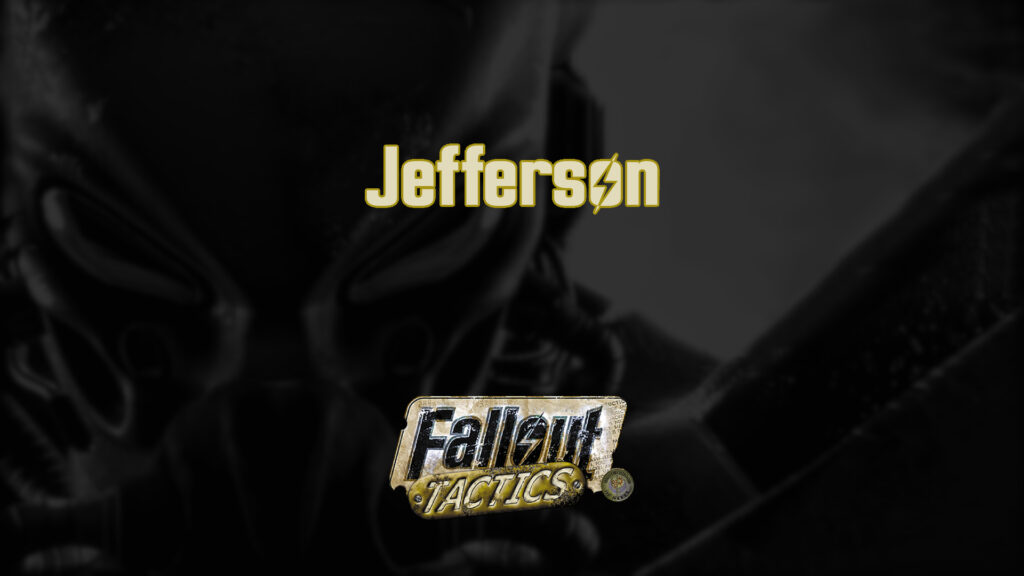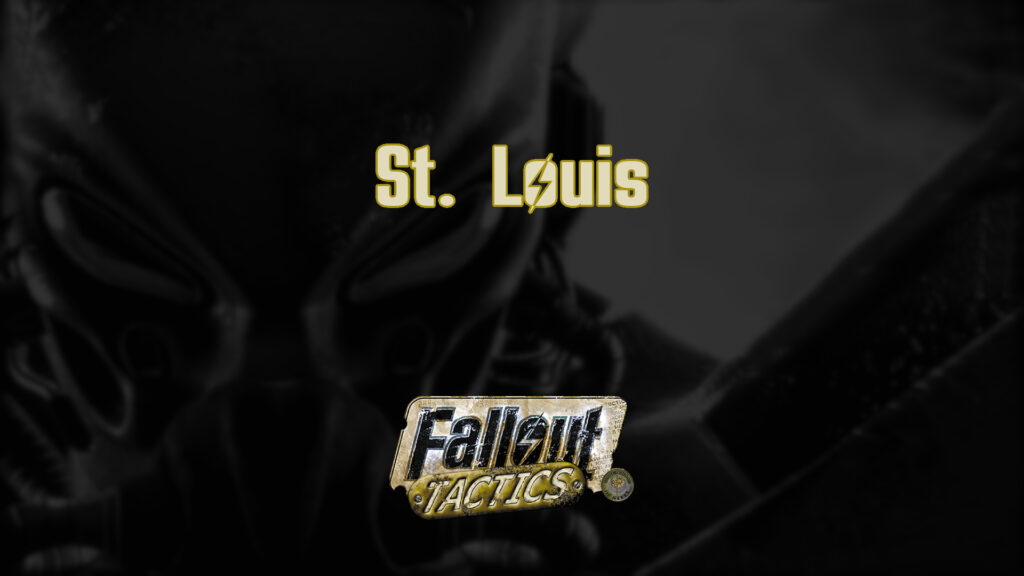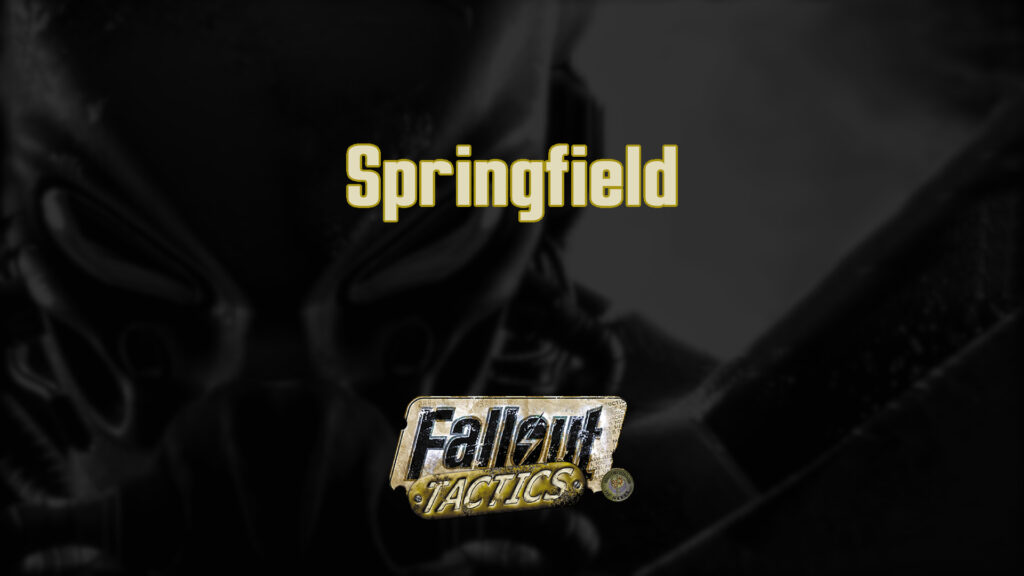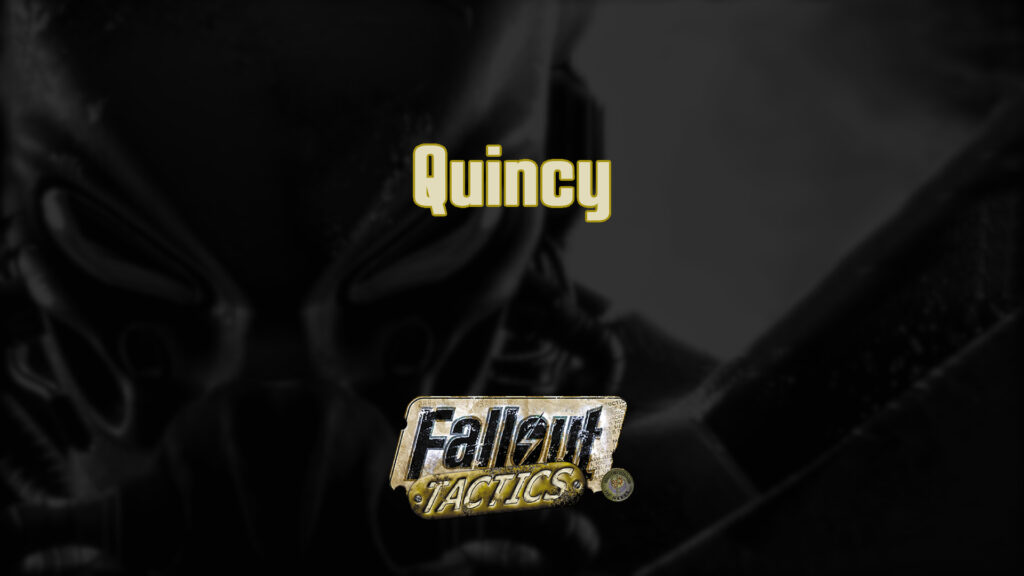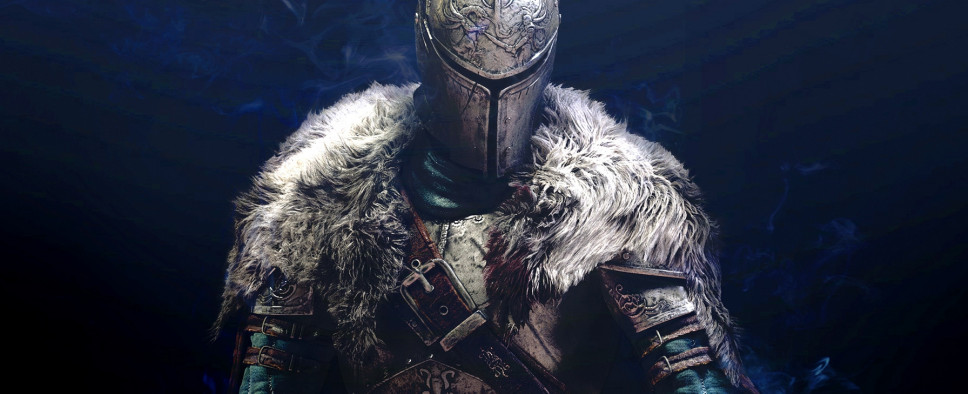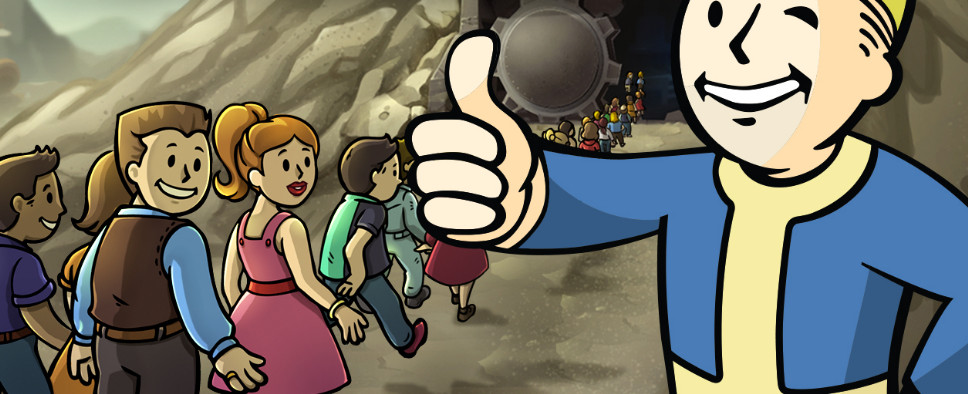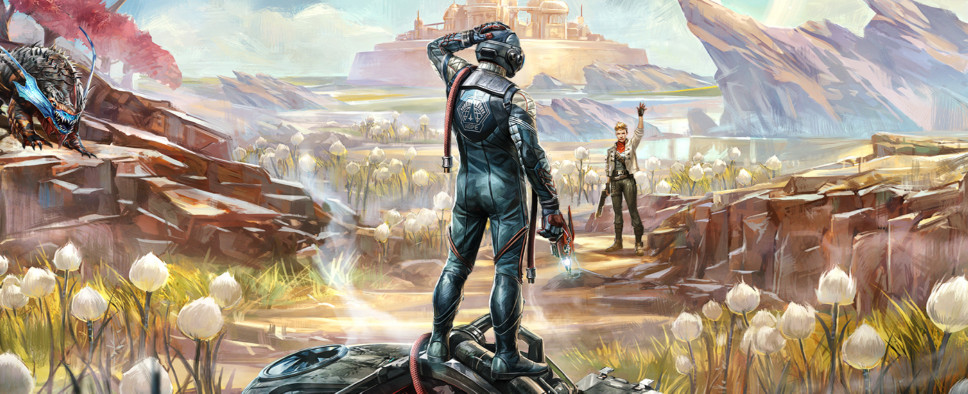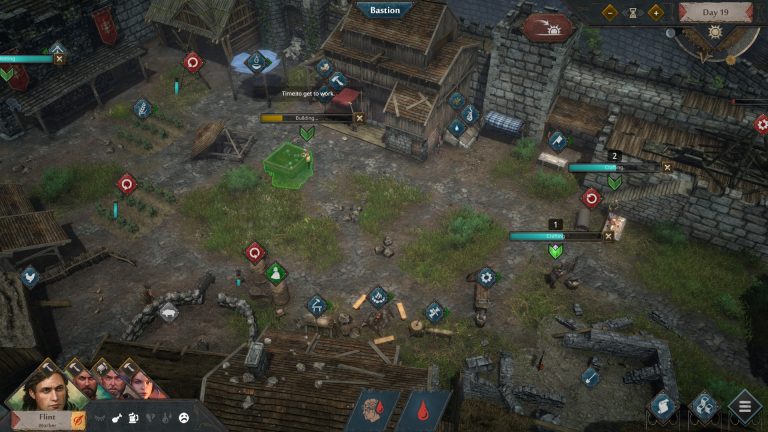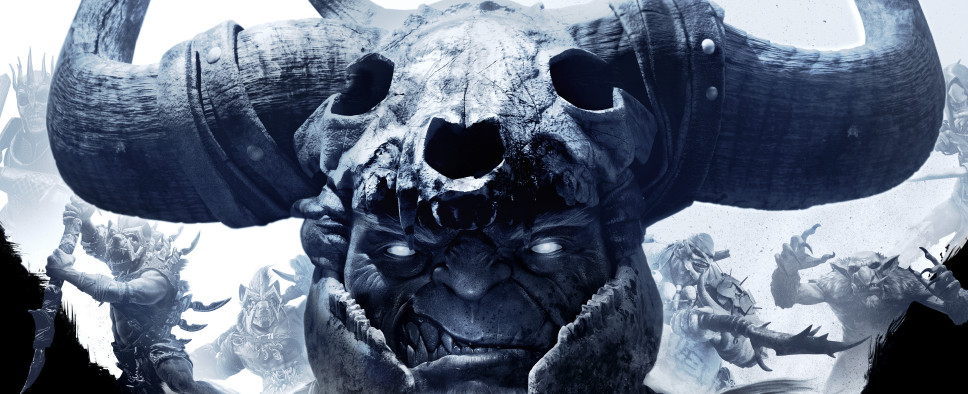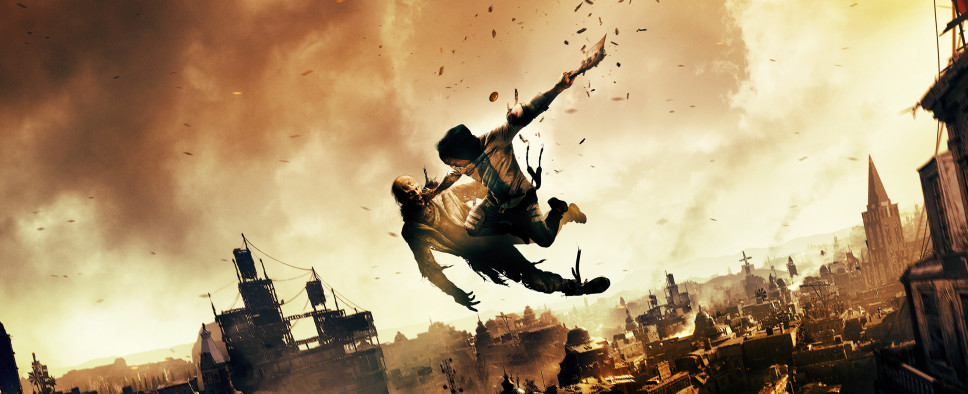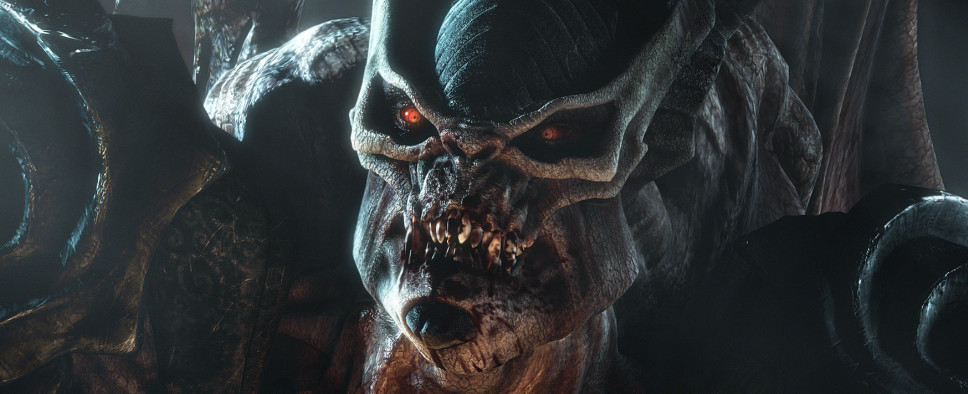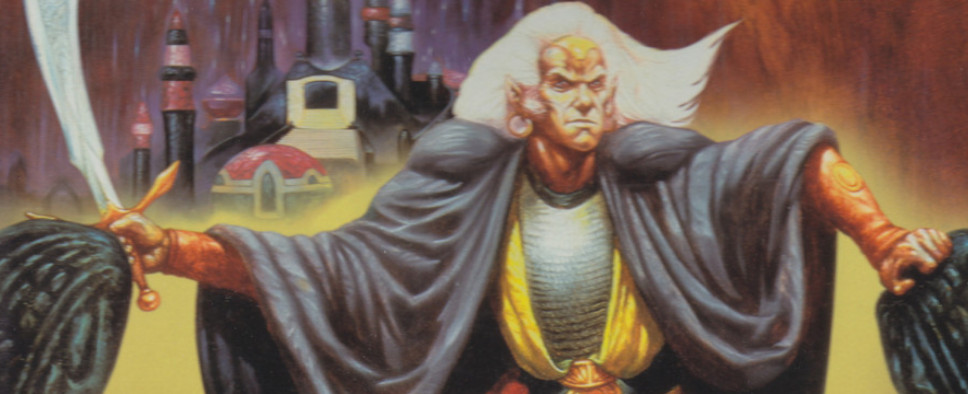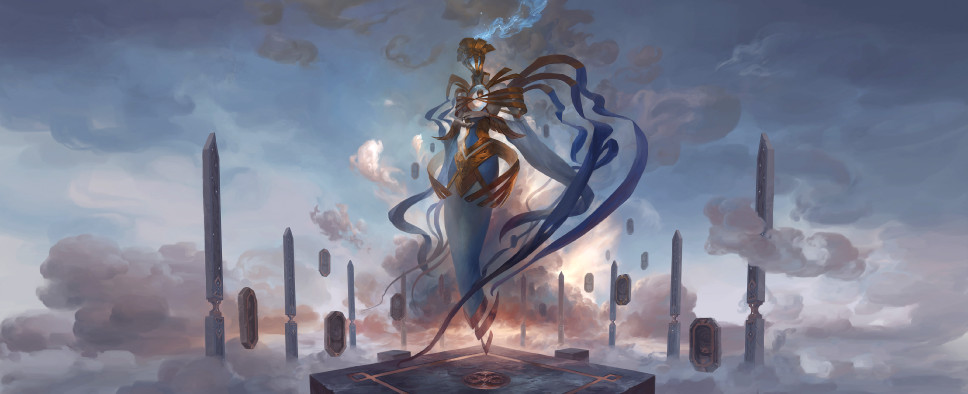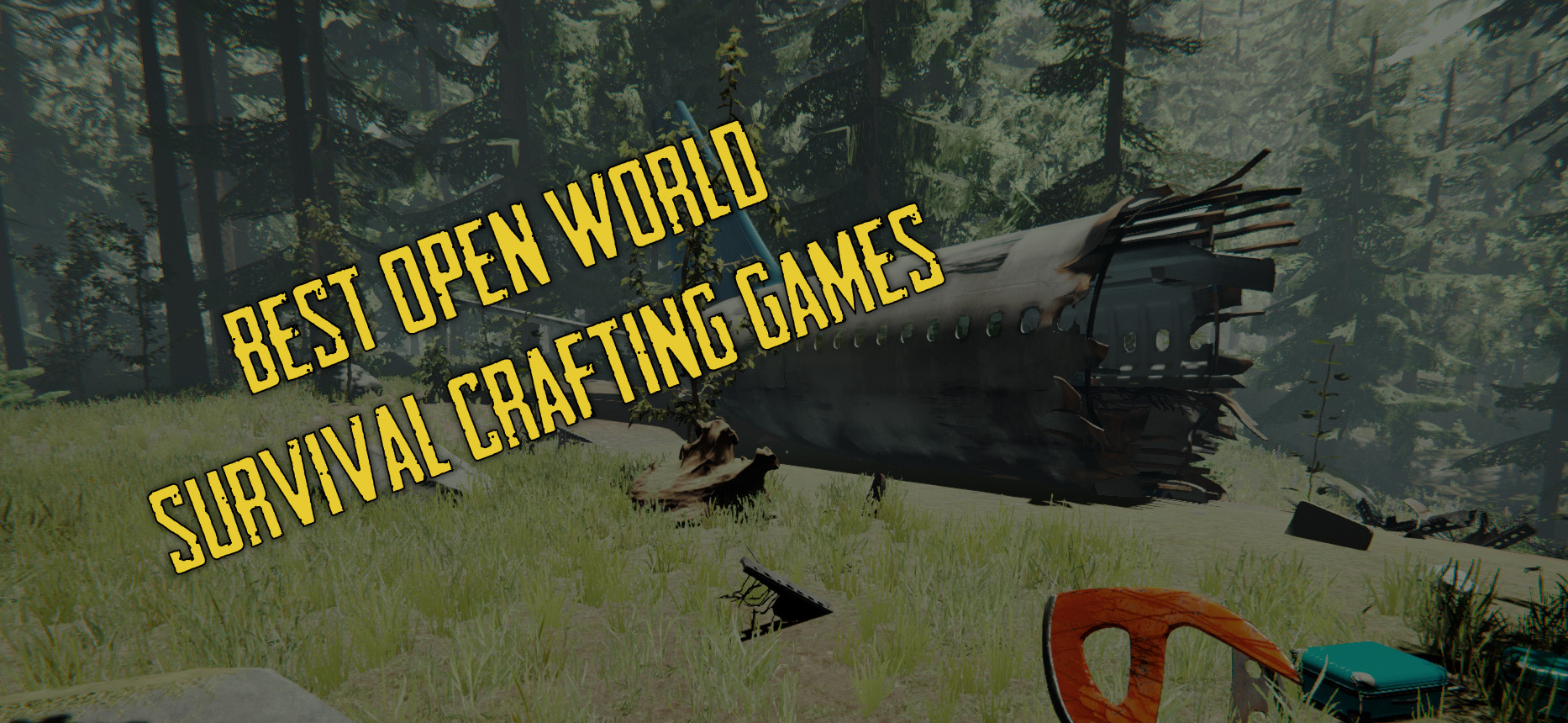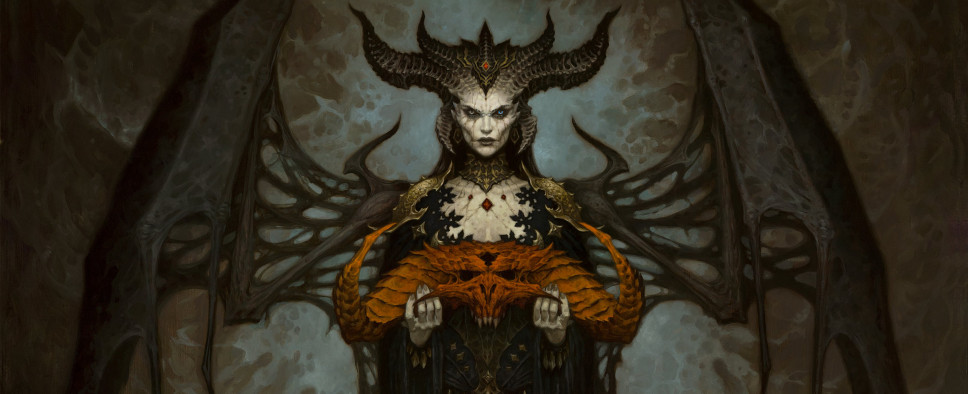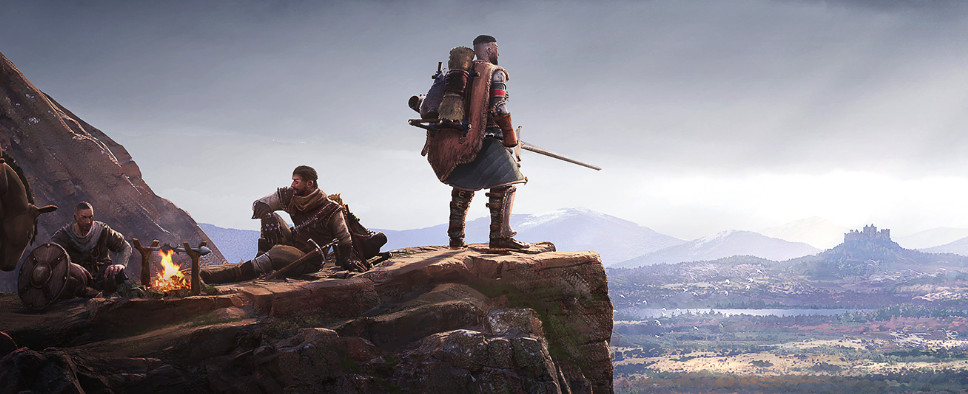Introduction
Developed by Obsidian Entertainment, The Outer Worlds is a sci-fi RPG that resembles a cross between a couple of Obsidian’s earlier titles - Fallout: New Vegas and Star Wars: Knights of the Old Republic II. The game was initially released back in late 2019 and received its first story DLC - Peril on Gorgon - in September 2020, which was then followed by a Steam and GOG launch.
The game’s second and final story DLC - Murder on Eridanos - was released in March 2021, allowing us to experience The Outer Worlds as one big complete package. And with that being the case, we decided to give it a go and see for ourselves what this project co-directed by the legendary Tim Cain and Leonard Boyarsky had in store for us.
You May Never Understand How The Stranger Is Inspired
If you’ve seen any of the vibrant promotional materials for The Outer Worlds, you might have this picture of a wacky space adventure in your head, with your brain instinctively likening the game to things like Futurama, Flash Gordon, Rick and Morty, or even Edgar Rice Burroughs' Barsoom stories. According to the game’s developers, Firefly and Terry Gilliam’s Brazil were also among their inspirations.
That’s quite a list. So, which of these impressive titles The Outer Worlds resembles most? Well, none of them really. When you actually start playing the game, the crazy vibrant paint job doesn’t hesitate to peel away, revealing a fairly by-the-numbers hub-based RPG with factions to support, terminals to hack, and dialog checks to pass. Think perspective and gameplay of New Vegas with the hub-based structure of Knights of the Old Republic.
But then, if you pay even the slightest bit of attention as you slog through The Outer Worlds’ seemingly endless weave of fetch quests, menial tasks, and forgettable combat encounters, you’ll undoubtedly realize that nothing about it makes any sense.
What’s positioned as this zany space adventure in a future world where corporations run the show, is in reality one of the least coherent and immersive games ever.
You see, for the most part, the game is populated with characters that act and talk like normal modern people and not the wacky dystopian space colonists they’re presented as. They’re neither crazy nor deadpan enough to exist in their world.
A world of mandatory slogans and excessive bureaucracy where you have to rent your own grave and where a team’s failure to meet impossible deadlines is punished by the summary execution of everyone involved.
And how do these normal everyday people react to this insanity? They don’t. They just keep going about their business and living their lives in this mad world without acknowledging it in any way.
The combination leaves you with a sense of great confusion as you try to wrap your head around this world that’s one wrestler-turned-president away from Idiocracy and its apparent inability to understand that a steady diet of canned wood chips may not be the healthiest thing in the universe. But at the same time, we’re often reminded that this is an advanced space-faring civilization capable of terraforming and putting its people in and out of cryosleep. The dissonance is maddening.
Now, to be fair, the game’s main quest does revolve around overthrowing the people in charge, but it’s presented as this mad enterprise spearheaded by a lone outlaw scientist whose radical idea is that slowly starving to death while singing happy tunes is no way to run a colony.
And in the meantime, the corporations are presented as greedy and profit-obsessed, not outright evil just for the fun of it like they actually come through. I honestly don't think the developers realize that profits have to come from somewhere.
So yeah, very little about The Outer Worlds makes sense, and in those rare instances where the game tries to explain itself, it just waves the inconsistencies away with a couple of throwaway lines at best.
Like when you take your merry band of companions who you’ve just met and know next to nothing about to the secret lair of a wanted terrorist and your employer, and the only thing standing between one of them selling you out is a quick exchange that boils down to, “Don’t worry, they’re with me.”
Speaking of companions. Up until The Outer Worlds, I haven't played a game from Obsidian where I didn't like the supporting cast. The Outer Worlds bucks this trend and presents you with a cast of seemingly random people (and a robot) who mostly exist to provide you with skill bonuses. They have very little connection to the overarching story, their reasons for joining you are shaky at best, and their personal quests are nothing to write home about. Almost feels like the game has companions just because some ancient tablet somewhere in Babylon decrees that a game like this should have companions.
And the worst part about it all is that you can clearly see what Obsidian was going for here. Every once in a while, a certain character or interaction manages to hit the right tone, like the Moon Man vendor, or the propaganda outtakes you stumble upon at some point. Or take the loading screens that document your adventures, pulp magazine-style. They tend to be quite neat and suggest a certain atmosphere that unfortunately doesn’t exist in the game.
Essentially, imagine if someone watched a bunch of Monty Python and decided to make a video game out of it, but then they staffed the team with clueless interns too young to know what a monty python is, and just to ensure they couldn’t produce anything worthwhile, gave them a tight deadline to boot.
And now that we’ve established that the entire game is a mess, you may be wondering what’s it about and what your role in it is?
Well, you play as The Stranger - a blank slate of a character who was among the frozen colonists on a ship bound for the Halcyon colony. Only due to a malfunction, your ship takes a scenic route and ends up arriving a couple decades too late. When that happens, the colony's bigwigs decide to keep you and your fellow colonists in stasis forever, because of course they do.
This is where a rogue scientist manages to unfreeze you, letting you loose upon the colony. After a brief introduction, he sends you after some chemicals you can use to free the other colonists. And that's essentially the main quest.
It’s structured in that very annoying way where wherever you go, people seem incapable of accommodating your very reasonable requests, and so in order to get them to help you, you have to perform various tasks for them.
The whole thing is one big fetch quest where you jump between a handful of settlements, solve their problems the best you can, and move on. Like I said before, it’s a pretty standard hub-based fair rife with opposing factions, double-crosses, side-quests, and plenty of locked doors and containers you can persuade open by various means.
But because of the game’s unimmersive nature, all of it feels like a chore. At all times you are painfully aware you’re playing a video game, one that does everything in its power to waste your time and gives you nothing of value in return.
The one bright spot in all this mess is the way the game integrates companions into dialogues and how it reacts to your skills and attributes, but that too only serves as a painful reminder of what could have been.
And even among all this mud, your character stands out as a particularly grimy splotch. Apart from the instances where you can side with one faction over another, the lines you get to choose from mostly tend to express the exact same thing, you’re just choosing how big of a dick to be about it.
Now, those of you who know your RPGs will be aware that real reactivity is a rare and precious thing, and that for the most part, games offer merely the illusion of choice. But rarely is it so transparent as it is in The Outer Worlds.
It’s like the developers completely forgot why you would go for a non-voice-acted protagonist in the first place because the things you get to say are usually short, to the point, and just one step above something you’d see dangling from a dialogue wheel.
I really don’t understand why we’re even creating a custom protagonist here, as the game gives you so little room to express any personality. My idea for the character in The Outer Worlds was this kooky mad scientist type who goes around zapping people with ray guns. But did I get a chance to be one? No. The best The Outer Worlds could do was recognize my high Science skill every once in a while.
You add to that the fact that you constantly seem to oscillate between being a clueless outsider and someone intimately familiar with the colony’s ways, and my earlier joke about interns starts to ring dangerously close to home.
And yet for all that railroading, your character isn’t defined at all, has no personal ties or agenda, and is just a vessel for chaos. And this is doubly unfortunate, as during the final stretch things do start to pick up. A semblance of a story lifts its head. You even get a couple of would-be antagonists in the last few hours.
You also get to actually visit your ship and learn its story. And it’s actually quite engaging. Was it really so hard to put this section at the beginning of the game? You know, to anchor your character to the world? Maybe give him a background and some people he cares about? Stakes, structure, that sort of thing?
Instead, as soon as the game starts picking up steam and presents you with some intriguing mysteries, it ends, leaving you confused and a bit angry. But hey, at least the ending slides are fairly satisfying, there are plenty of puns and references, and no sign of romances, so it’s not all bad I guess.
Good + 2 = ???
Now that I’ve taken a break to purge my mind from its futile attempts to understand how The Outer World’s story could have escaped the first draft stage, let’s talk about the game’s roleplaying system.
As most RPGs do, The Outer Worlds begins with you creating a character. First things first, you need to distribute some attribute points. But, as opposed to some simple and easy-to-understand system, like Fallout's SPECIAL, you have to deal with someone's poor attempt to simplify the wheel by strapping a nuclear reactor to it.
You see, your attributes don't have numerical values and instead, they go as listed: Below Average, Average, Good, High, Very High. But in order to manipulate them, you will be using numbers. So, for example, if you add 2 stat points to Average, you get High in The Outer Worlds. Why High and not Good or any other positive adjective for that matter? Don’t ask me, just make your peace with this non-Euclidean character building.
Now, the fun part about The Outer Worlds’ attributes is when you put them at Below Average, your character gets a unique penalty, like not being able to regenerate health. Just so we’re clear - this is a great idea. As opposed to the terrible idea of combining random words with numbers. Ideally, a team of gainfully employed developers would have someone to differentiate between the two, but apparently, we don’t live in a perfect world.
The skill system follows a similar pattern, where skills are separated into groups, and up to a certain point, your skill points improve the whole group, but after a while, you have to choose which skills to specialize in. As you improve your skills, you get passive numerical bonuses and upon reaching certain skill thresholds, you unlock additional abilities, like sneak attacks or extra limb damage and status effects.
But then some of those bonuses are borderline useless, the game doesn’t have enough skill checks to encourage specializing, and as a cherry on top, you can be pretty good at most things without investing any skill points at all.
I played the game on Hard, the third of the game’s four difficulties, with the final one being more annoying than anything else on account of it limiting your saving options. And my character was this scientist type with terrible physical attributes and nothing invested into weapon skills.
In the end, this very surprisingly ended up being a very strong combat-oriented build thanks to some ridiculously overpowered perks and science weapons, but before I got there, I used all sorts of conventional guns. And even then, there wasn’t a problem in The Outer Worlds I couldn’t solve by backpedaling while holding the left mouse button.
When creating a character, you also pick an aptitude, only instead of Arcanum’s playthrough-defining backgrounds, these don’t really do anything worth mentioning. They’re just there to give you another thing to click during character creation.
Later on, every two levels you’ll get a perk point. There are three tiers of perks in the game, with sixteen perks in each tier. You need to invest five points to unlock the second tier, and ten for the third.
Perks make you better at certain things, like wrangling your companions or carrying more stuff. But seeing how some of them are pretty useless and others are mutually exclusive (you won’t get the benefits of the lone wolf perks if you have any companions with you), by the end of the game you’ll have more points than there are useful perks.
This is especially true if you utilize the Flaw system. During the game's development, it was paraded around as a unique approach to character building, but in reality, it just allows you to make yourself worse at fighting in certain scenarios (which will still be very easy) in exchange for an extra perk point. So, once again, we have a system that could have been good and interesting but isn't.
See That Tiny Rock? You Probably Can’t Climb It!
On paper, The Outer Worlds has a pretty deep combat system. Every weapon has a good number of secondary stats. There are different damage types that become stronger or weaker depending on who you target. You can specialize in either melee, ranged, or science weapons. You can also modify them in a variety of ways. You can give orders to your companions. You can even slow down time in order to improve your aim and scan your enemies (this is explained away with a single line about cryosleep side effects).
In reality, none of it matters, as you simply have to shoot a stern look at your enemies for them to fall over. The game has no inventive, challenging, or exciting encounters. Just a whole bunch of pointless fights to distract you from how cramped the maps are.
And sure, the scenery outside looks great and has a distinctly alien feel to it. But you don't really get to do any actual exploring there. You will mostly be traveling between settlements, occasionally taking a detour to check out some random point of interest.
But those points are not particularly interesting. They usually consist of some wreck, a building or two, and a few crates with some spare change and a dozen of bullets. There are no caves to explore, no mountains to climb, no hidden nooks to discover. Just pretty trees, invisible walls, and forgettable fights.
This gives The Outer Worlds a certain lifeless, mechanical feel. And to make matters even worse, the game’s NPCs rarely move or really do anything.
And so there you are, jumping between planets and asteroids, and everywhere you go, you see piles of ammo, lockpicks, and unattended currency lying around. You start by diligently picking it all up, but before long, you have thousands of each ammo type, more consumables than you’ll ever be able to use, and nothing worthwhile to spend your hard-stolen money on.
Thankfully, I don’t suffer from that nefarious disease that forces people to pick up absolutely everything in video games, but for someone who does, I can see The Outer Worlds becoming a true nightmare.
Beyond just being tedious, this constant drip of consumables acts as another point against the believability of the game’s world, as what sane society would just have all that stuff out in the open? Why instead not put all those stashes of 5-10 bullets into an armory or storeroom somewhere to both save the player the trouble of endlessly picking things up, and simultaneously present at least some semblance of world-building?
Apart from those sundries, you’ll also be looting guns, armors, and their respective mods. But here’s the thing, with the game’s difficulty being what it is, it doesn’t matter much what you wear, there’s very little difference between the regular guns and their rare unique counterparts, and in general, the game’s weapon variety is quite lacking.
You essentially get a gun type for every occasion, each with three tiers of quality. And then, you just manually tinker with those guns (and armor for that matter), to raise their level and improve their stats. So most of the time, you find a gun you like and then keep using and upgrading it until you find the same gun but of a higher tier and repeat the process. And that’s not exactly exciting.
Now, let’s compare that to another sci-fi RPG shooter - the Borderlands series. Even though I’m not its biggest fan, I have to admit it does a much better job of creating a wacky world and populating it with crazy characters. But also, it has several gun manufacturers, each with their own design principles that are actually represented in the games, not to mention their ties to the games’ stories. It’s like Borderlands does what The Outer Worlds tries to do, but better and without even trying.
The Real The Outer Worlds Starts Now
At this point, you might be wondering, with the base game being what it is, why would anyone inflict more of it on themselves? And the answer is - because the game's two story DLC are actually not half-bad.
Peril on Gorgon, the game’s first DLC, starts with a funny bit, then allows you to do some exploring and discover an alternate route or two before meeting an intriguing character central to the DLC’s plot that revolves around an abandoned research facility and its long-lasting impact on the colony.
The DLC has a structure, a coherent tone, and it presents the game’s corporations in a more believable but still wacky way. It has side quests connected to the main story, it has opportunities to go out of your way to learn more about what’s going on, and it has some memorable characters.
Admittedly, at one point it sends you on a wild goose chase, has some minor plot inconsistencies, and is still hampered by the game’s basic mechanics, but the content on average is good enough to overlook those.
It’s simply bizarre that the same people who made the base game also made this DLC. They’re clearly capable of producing decent content. But then they put it in a DLC that most people won’t see because they’ve already given up on the game.
Now, Murder on Eridanos, the game’s second and final bit of extra content, is also way better than the core The Outer Worlds. And while I don’t think it’s quite as good as Peril on Gorgon, it still has its share of great moments, memorable characters, and fun interactions.
It also has an entirely new system that allows you to play detective and uncover clues surrounding a nefarious murder with the help of a wise-cracking gadget. You know, the sort of thing you’d expect from a humorous sci-fi adventure.
Ray guns, vodka Gatlings, killer wasps, and brain slugs. And all of that in vibrant color, with upbeat music playing in the background. I just wish the rest of the game could’ve been like this.
Technical Information
In the past, Obsidian had a reputation for great stories and terrible QA. The Outer Worlds flips that formula around. For all the nonsense the game throws at you, it works perfectly fine, runs without any noticeable slowdowns or crashes, and is generally quick to save and load. During my playthrough, I haven’t noticed any bugs, and that must be a first for an Obsidian title.
Visually, the game looks gorgeous outside and boring inside, while its characters all look like some dye festival gone wrong in a clone factory. The audio does its job but isn't something you'd write home about.
Unfortunately, the game’s menus seem to have been designed with a controller in mind, which makes navigating them a bit of a chore, but it’s not too bad.
Otherwise, the game’s controls are a bit weird in that for some reason, you can’t rebind certain buttons, like say J for Journal. This also extends to the game’s dodge move that’s forever tied to double-tapping Space, which makes dodging essentially unusable. Thankfully, you don’t really need it if you’re playing with ranged weapons.
Conclusion
In the end, The Outer Worlds can be seen as a case of shooting for the moon but ending up face-down in a pile of dirt. The game’s basic premise could have been great, but its weak writing, lacking exploration, and bland character design make it very hard to care about anything.
Pair that with a subpar roleplaying system, and the only thing The Outer Worlds has going for it are its pretty decent DLC. But with how incoherent it is as a complete package, it can easily be crowned as The Room of RPGs. Play it only if you're desperate for a hub-based title that's somewhat similar to New Vegas. Otherwise, I advise you give it a wide berth.
